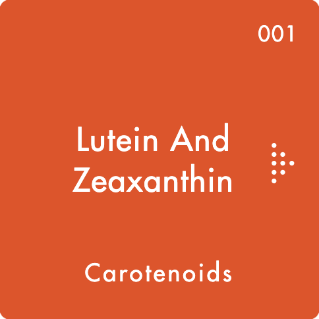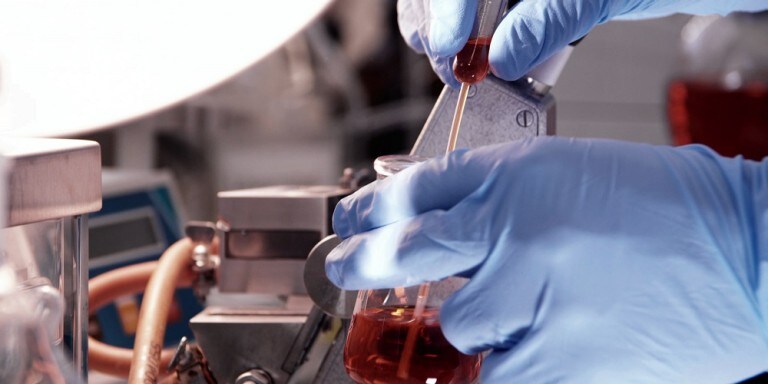
Health functions
Carotenoids can absorb light in the visible range of the spectrum and may protect the eye from light-induced oxidative damage. Read More

Lutein and its sister compound zeaxanthin are two of the most abundant carotenoids in the diet of industrialized countries. The names of both reflect their natural yellow color (the Latin ‘luteus’ and the Greek ‘xanthos’ mean ‘yellow’).
These carotenoids are found notably concentrated in leafy green vegetables. Since these foods also feature a host of other pigments, the yellow color of lutein and zeaxanthin is not predominant.
As the human body cannot produce lutein and zeaxanthin, they need to be obtained through food. Lutein is present in the eye, blood, skin, brain and breast.
Unlike beta-carotene, lutein and zeaxanthin cannot be converted in the body into vitamin A (retinol).
As antioxidants, potentially protecting the body against cell-damaging effects of free radicals, lutein and zeaxanthin have been linked to disease prevention, especially age-related eye diseases.
Authored by Dr Peter Engel in 2010, reviewed and revised by Jonas Wittwer on 13.06.2017

Carotenoids can absorb light in the visible range of the spectrum and may protect the eye from light-induced oxidative damage. Read More

Dietary intakes of lutein and zeaxanthin were associated with a decreased lung cancer risk in a six-year study in more than 58,000 Dutch men (3) while other studies did not show such association (see also beta-carotene). Read More
Things to know about Luthein and Zeaxanthin
Several studies have suggested lutein and zeaxanthin may lower the risk for forming age-related macular degeneration (AMD) and cataracts. Read More
There are currently no recommended dietary allowance (RDA) for lutein and zeaxanthin (carotenoids). Read More
Currently, there are only very limited lutein and zeaxanthin consumption data available. Read More
There is not yet a well-established definition of lutein or zeaxanthin (carotenoid) deficiency. Read More